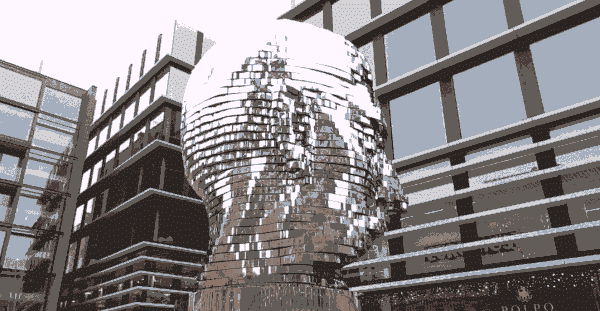
Want to get the latest Maker Pro news right in your inbox? Subscribe to our weekly newsletter.
“[It’s] like sculpting with a magical clay dispenser” —Caleb Kraft on Oculus Medium
The Internet of Plants and Fields
An expansive BBC feature dares us to imagine a future in which farming will become largely automated. In this vision, which the Bosch-owned startup Deepfield Robotics terms the “Internet of plants and fields,” hands-on farming will gradually give way to a delicate ballet of drones, driverless tractors, and nimble robotic workers that will tend and harvest our food supply.
It’s a plausible future in the sense that advancements in farming technology have already made agriculture enormously more efficient over the past century, and a hopeful one in the face of the World Bank’s grave predictions that the world will need to greatly increase its food production over the next few decades to keep pace with the growing population.
But it’s also a vision rife with technical challenges ranging from the academic to the mundane: imagine, for example, the astonishing dexterity that French inventor Christophe Millot’s (@chmillot) pruning robot Wall-Ye needs to snip growth from grapevines without hurting the plant too much — seriously, just read that BBC story!
Experts predict that the market for automated farming could grow to hundreds of billions over the next decade. It’ll be intriguing to watch the role of maker pros in that new — er — ecosystem, whether they take the role of technological innovators or of farmers looking to leverage new technologies into the next generation of local farm.
How do you think maker pros will fit into the future of agriculture? Let us know: MakerPro@makermedia.com.
Virtual Reality and the Future of Making
Earlier this year, Make: explored ways that the recent explosion in virtual reality technology could shape the future of making. This week, Caleb Kraft (@calebkraft) revisits the topic with a preview of Oculus Medium (@OculusMedium), a potentially game-changing design platform that lets designers sculpt claylike 3D models in a virtual environment using Oculus Touch controllers.
“[It’s] like sculpting with a magical clay dispenser,” Kraft said.
The way designers will leverage virtual reality is almost certain to become a key question for maker pros. We’re already seeing signs of it in industry. Architecture firms are using VR headsets to wow clients. TenkLabs (@TenkLabs), as Kraft points out, is working on its own modeling solution called Kodon. Even Autodesk (@autodesk) is getting involved by investigating ways to leverage virtual and augmented reality not only to collaborate and model objects but to help builders navigate complex job sites.
The hype for virtual reality has been strong, perhaps in part because the concept has failed several times before. If this iteration succeeds, we suspect that non-gaming applications will be the most interesting: the ways we might integrate VR into our social, artistic and entrepreneurial self-expression.
There’s a general sense that VR is at a liminal moment, which is incredibly exciting. Neither the hardware, software, nor interfaces are standardized yet — which, while it renders the future unknowable, means anyone can still take part and shape its future.
Do you know of other businesses already using virtual reality? Send us an email!
Fabrication Roundup
We’ve seen a lot of digital fabrication news lately. Take this report on the steady expansion of industrial 3D printing from its roots as a prototyping tool to an end-use manufacturing technology. “You tend to find smaller companies innovating a lot,” Stratasys (@Stratasys) marketing manager Simon Brandon (@SimonBrandon) told TCT Magazine, pointing toward lightswitch and electrical component maker Schneider Electric.
On the consumer side, Yeehaw (@Yeehaw3DPrinter) found an interesting niche with its $249 kid-oriented 3D printer, which quickly smashed its $25,000 funding goal with pre-order sales. And then there’s the Magic Candy Factory (@3DMagicCandy), which prints gummy candy into any shape.
In software, Prusa Printers (@josefprusa) released its own custom flavor of Slic3r that includes a new interface and cubic infill support tailored for its i3 MK2. The MK2 is already the top pick from Make:’s 3D Printer Buyer’s Guide and these upgrades will likely make it even better. On the research side, MIT scientists are collaborating with Stratasys to generate strong, organic-looking filling for 3D printed objects. And in education, German startup Gramm launched what it says is the first interactive online course for additive manufacturing.
Also, don’t miss two terrific posts on the Make: blog: a review of the Brother SE400 sewing and embroidering system—“a fantastic machine,” per Caleb Kraft (@calebkraft)—and this impressive roundup of 3D printing mods, ranging from easy to extraordinarily technical.
Elsewhere on the Maker Pro Web:
Apple Music take heed: hip hop mogul Jay Z’s Roc Nation (@RocNation) label joined high-profile investors including FoxConn (@foxconnoficial) to fund the Paris-based hardware startup Devialet (@DEVIALET), which makes audio equipment said to produce unprecedented digital sound fidelity.
Quality work by maker pros is often predicated on the open source movement. This past week, Make: celebrated their work with #OpenCyberMonday. Drop by the tag to see why Massimo Banzi (@mbanzi), Adafruit (@adafruit), and others swear by open source software and hardware.
DJI (@DJIGlobal) hit some turbulence this holiday season: the drone maker advertised its Inspire 2 unit as traveling at up to 67 miles per hour, when in reality its top speed seems to be more like 58 MPH — which, needless to say, is still a decent clip. The lesson for maker pros? Test and keep testing.
Remember, artists are part of the maker pro scene. Case in point: David Černý’s (@davdidak) mind-bending, computer-controlled kinetic sculpture of troubled writer Franz Kafka, currently on display in Prague.
ADVERTISEMENT










